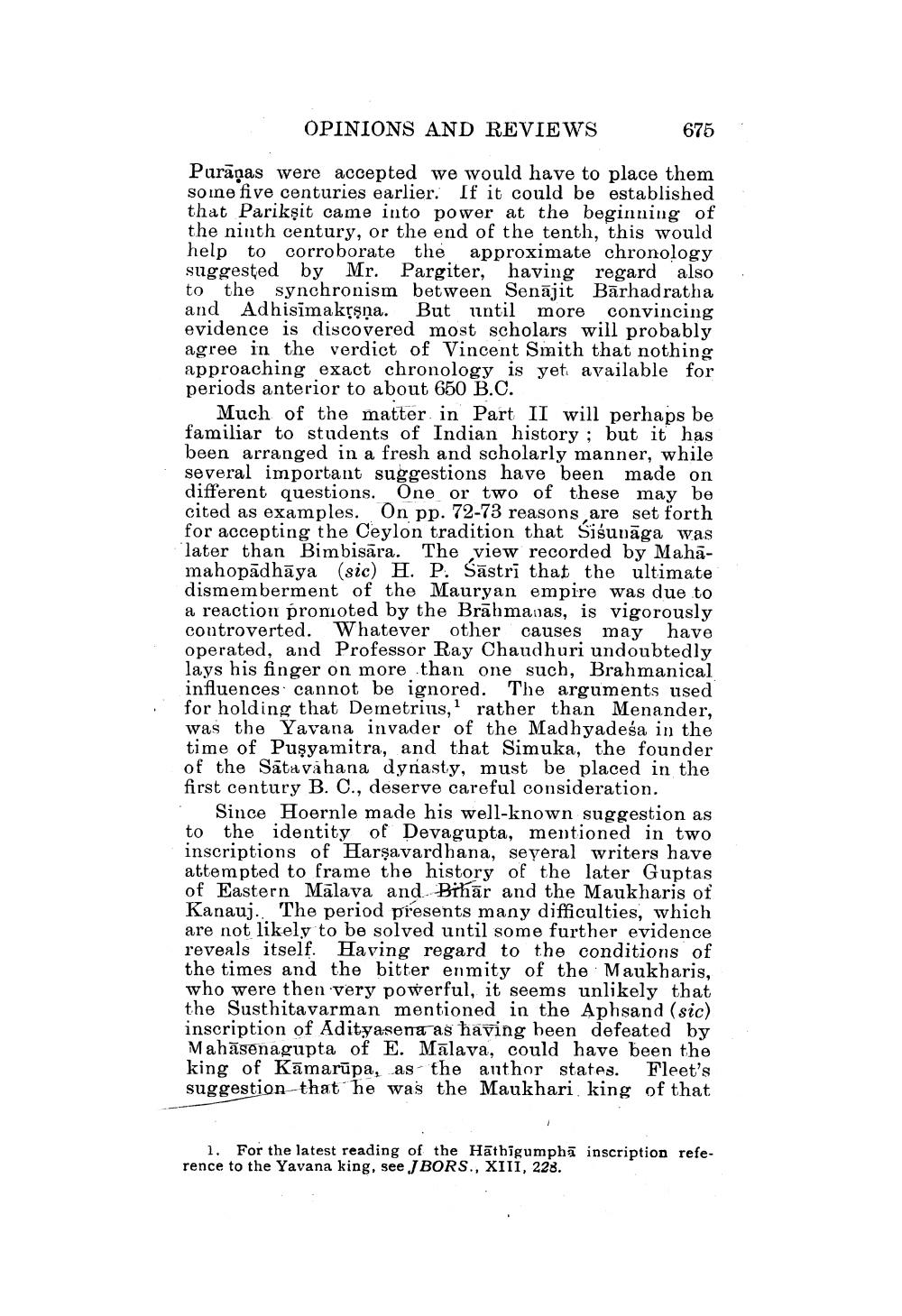________________
OPINIONS AND REVIEWS
675
Puranas were accepted we would have to place them soine five centuries earlier. If it could be established that Parikşit came into power at the beginning of the ninth century, or the end of the tenth, this would help to corroborate the approximate chronology suggested by Mr. Pargiter, having regard also to the synchronism between Senājit Bārhadratha and Adhisimakršņa. But until more convincing evidence is discovered most scholars will probably agree in the verdict of Vincent Smith that nothing approaching exact chronology is yet available for periods anterior to about 650 B.C.
Much of the matter in Part II will perhaps be familiar to students of Indian history ; but it has been arranged in a fresh and scholarly manner, while several important suggestions have been made on different questions. One or two of these may be cited as examples. On pp. 72-73 reasons, are set forth for accepting the Ceylon tradition that Sisunāga was later than Bimbisāra. The view recorded by Mahamahopadhāya (sic) H. P. Sāstri that the ultimate dismemberment of the Mauryan empire was due to a reaction promoted by the Brāhmanas, is vigorously controverted. Whatever other causes may have operated, and Professor Ray Chaudhuri undoubtedly lays his finger on more than one such, Brahmanical influences cannot be ignored. The arguments used for holding that Demetrius, rather than Menander, was the Yavana invader of the Madhyadeśa in the time of Pusyamitra, and that Simuka, the founder of the Satavahana dynasty, must be placed in the first century B. C., deserve careful consideration.
Since Hoernle made his well-known suggestion as to the identity of Devagupta, mentioned in two inscriptions of Harşavardhana, se yeral writers have attempted to frame the history of the later Guptas of Eastern Mālava and Bihār and the Maukharis of Kanauj. The period presents many difficulties, which are not likely to be solved until some further evidence reveals itself. Having regard to the conditions of the times and the bitter enmity of the Maukharis, who were then very powerful, it seems unlikely that the Susthitavarman mentioned in the Aphsand (sic) inscription of Adityasena as having been defeated by Mahāsenagupta of E. Mālava, could have been the king of Kāmarūpa, as the author states. Fleet's suggestion that he was the Maukhari king of that
1. For the latest reading of the Häthigumphī inscription reference to the Yavana king, see J BORS., XIII, 228.




